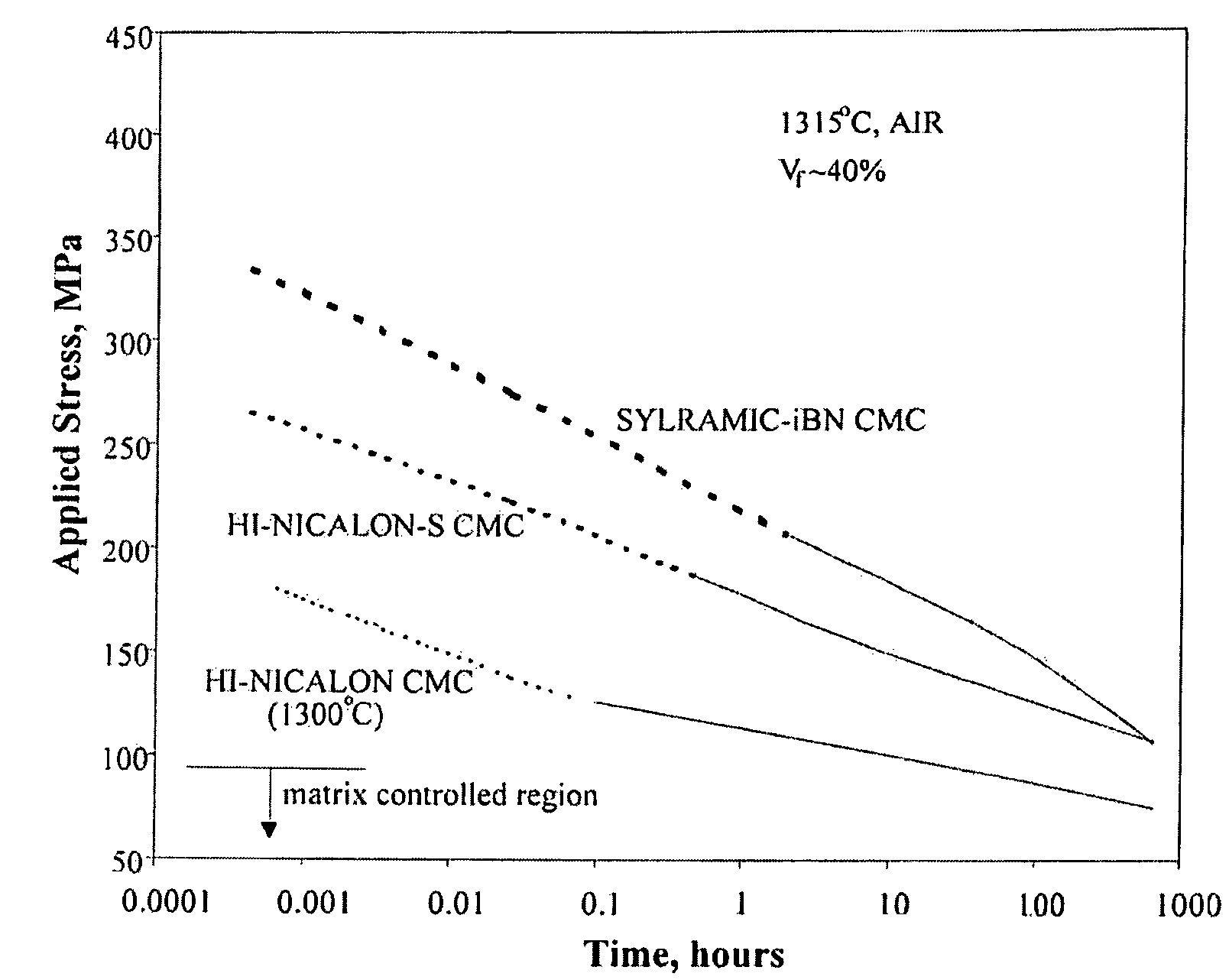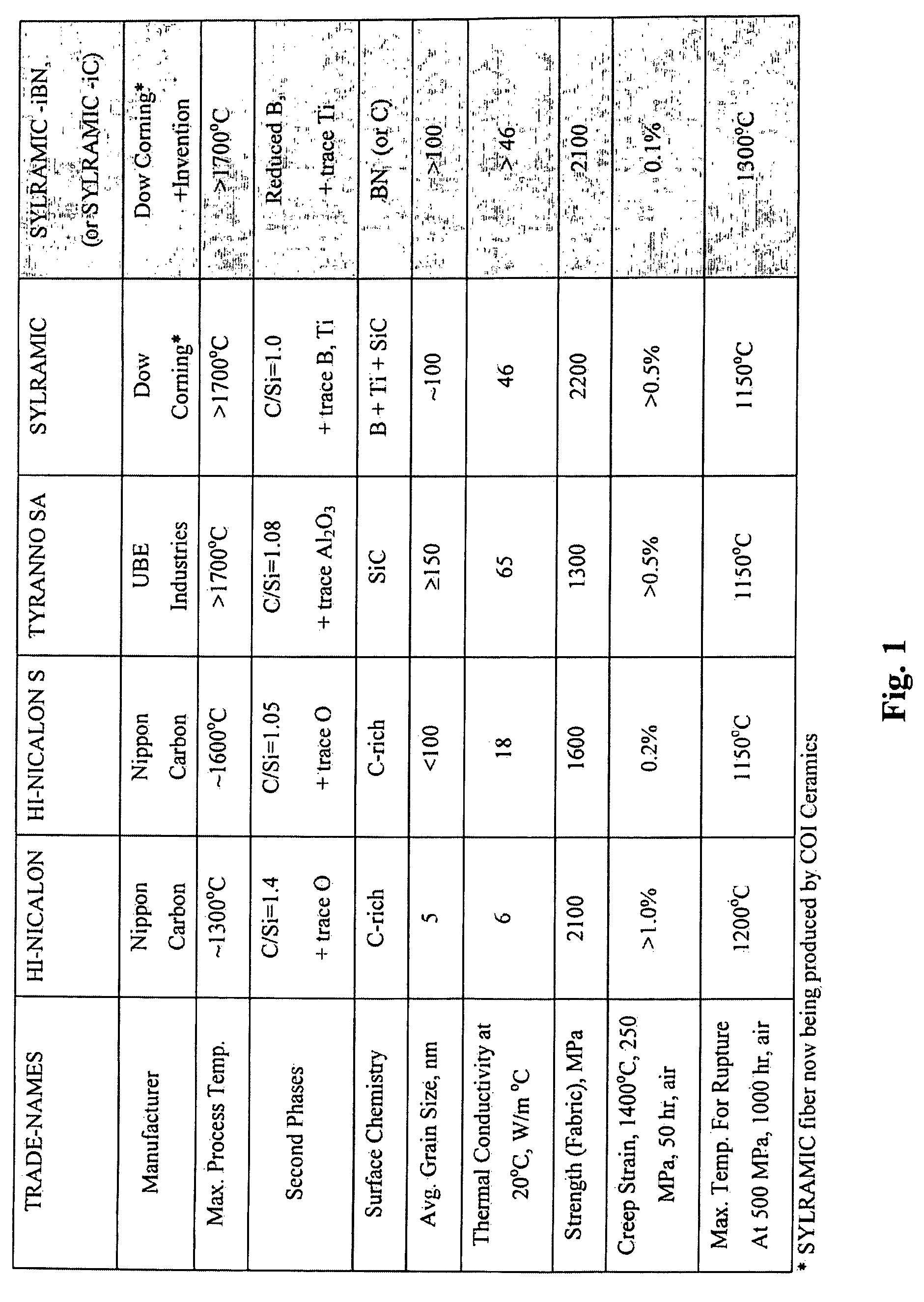Methods for producing silicon carbide architectural preforms
a technology of silicon carbide and architectural preforms, which is applied in the field of methods for producing silicon carbide architectural preforms, can solve the problems of limiting fiber thermal conductivity, creep-rupture resistance, and strength retention capability, composite long-term service temperatures, and non-optimized fiber thermal conductivity. , to achieve the effect of reducing boron, enhancing creep resistance and rupture resistance, and minimal loss of an average tensile strength
- Summary
- Abstract
- Description
- Claims
- Application Information
AI Technical Summary
Benefits of technology
Problems solved by technology
Method used
Image
Examples
first embodiment
[0052]Because one atmosphere is a convenient pressure that allows all SYLRAMIC fiber surfaces to be uniformly coated (even in the thick architectures) with either an in-situ BN or carbon layer and with little strength degradation, this invention is batch processing using thermal treatment at one atmosphere pressure for the maximum time-temperature conditions of one hour and 1800° C. The choice of high-purity argon or nitrogen gas is dependent on the final composite application; that is, the choice between a high-performance fiber with an in-situ grown carbon layer of controllable thickness or a high-performance fiber with a thin in-situ grown BN layer with much better oxidative durability. For one-atmospheric treatment in the IVI furnace, the most practical treatment procedure was determined to be as follows: constant gas flow rate of 1 cubic-foot / hr during heat-up, temperature-hold, and during cool-down; furnace heat-up rates of ˜20° C. / min from 25 to ˜1200° C., ˜12° C. / min from 12...
second embodiment
[0054]Thus this invention, as determined with the high-pressure mini-HIP facility, is batch treatment of SYLRAMIC fiber architectures at a static gas pressure of 40 atmospheres using the same time-temperature schedule as described above for the IVI furnace. Besides achieving state-of-the-art tensile creep and rupture resistance for the individual fibers, the treatments under high gas pressure should also allow better penetration of the gases into the fiber architectures and aid in limiting silicon vaporization from the fiber surfaces. FIG. 1 lists some key properties of the high-pressure produced SYLRAMIC-iBN and SYLRAMIC-iC fibers (shaded area). It can be seen that in their as-produced condition these fiber types display the best combination of key properties needed for advanced SiC / SiC components; that is, high thermal conductivity, high tensile strength, and high creep resistance, which in turn allows the highest temperature capability (1300° C.) in terms of avoiding fracture or ...
PUM
| Property | Measurement | Unit |
|---|---|---|
| pressure | aaaaa | aaaaa |
| temperature | aaaaa | aaaaa |
| temperature | aaaaa | aaaaa |
Abstract
Description
Claims
Application Information
 Login to View More
Login to View More - R&D
- Intellectual Property
- Life Sciences
- Materials
- Tech Scout
- Unparalleled Data Quality
- Higher Quality Content
- 60% Fewer Hallucinations
Browse by: Latest US Patents, China's latest patents, Technical Efficacy Thesaurus, Application Domain, Technology Topic, Popular Technical Reports.
© 2025 PatSnap. All rights reserved.Legal|Privacy policy|Modern Slavery Act Transparency Statement|Sitemap|About US| Contact US: help@patsnap.com



